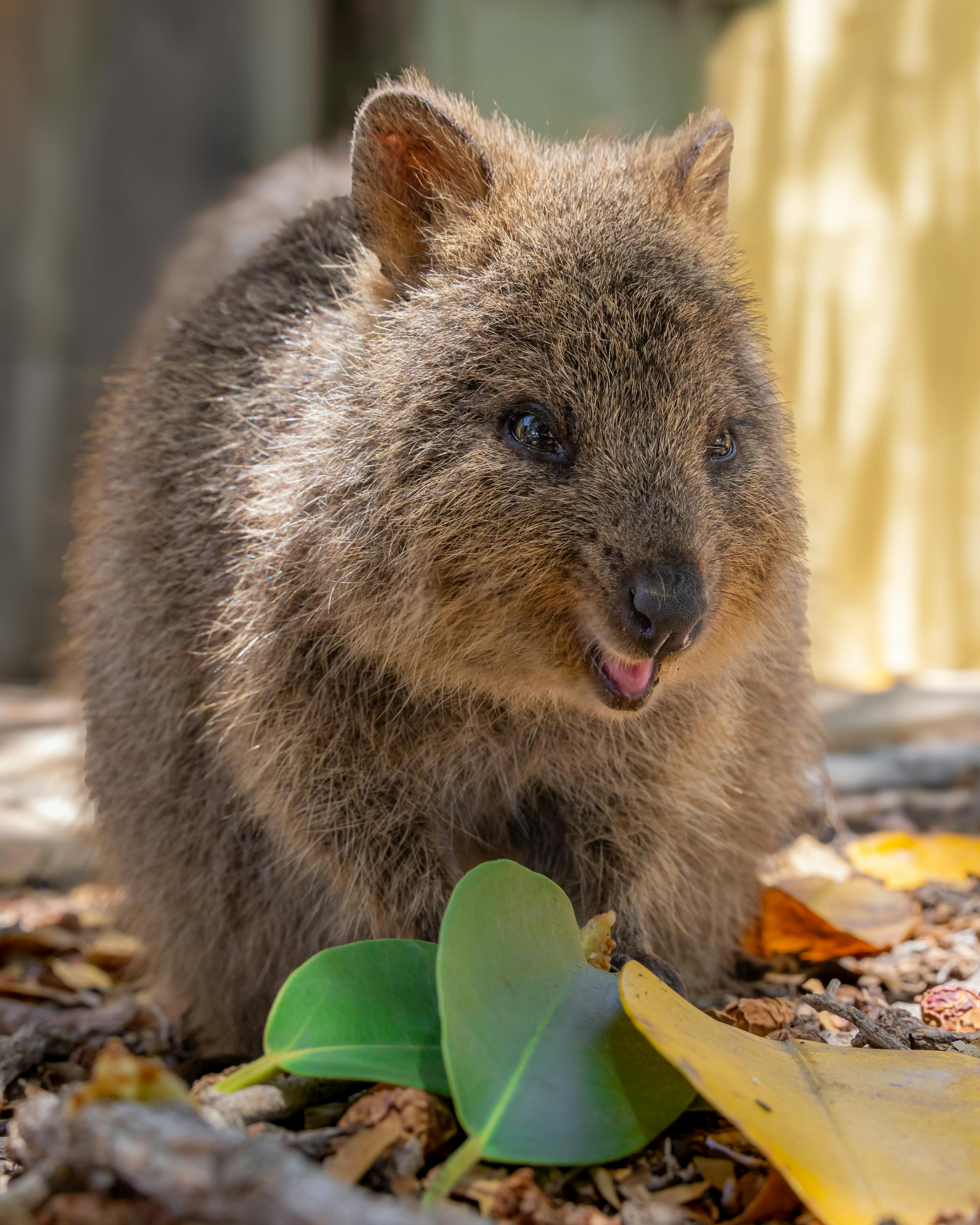Journey into the World of the Quokka: Australia's Happiest Marsupial
Introduction: Delve into the world of smiling, photogenic quokkas. Discover how these small marsupials have captivated the world with their seemingly happy expressions and learn about their fascinating biology, history, and conservation efforts. Quokkas (Setonix brachyurus), also known as the "world's happiest animal," are small marsupials native to Western Australia. They made their first appearance in historical records in 1658, when Dutch mariner Samuel Volckertzoon described them as "a kind of rat as big as a common cat." Despite this less-than-flattering introduction, quokkas quickly caught the world's attention with their unique biology and peculiar behavior, which seems to involve a perpetual smile.

The Biology Behind the Grin
The quokka’s distinctive smile isn’t a reflection of their emotional state, as is often misconstrued. Instead, it’s an evolutionary adaptation. Their facial structure naturally forms what appears to be a grin, which helps with thermoregulation and panting. The round, fluffy marsupials also have a compact body with a sturdy tail, adding to their overall endearing appearance.
The Quokka’s Social Media Stardom
Quokkas found global fame in an age dominated by social media. From the moment the first quokka selfie went viral, these creatures became a symbol of joy and positivity. Their popularity has grown over the years, with the hashtag #quokkaselfie generating millions of views across various platforms. This fame has had significant implications, both positive and negative, for their conservation.
Conservation Efforts for Quokkas
Quokkas are currently listed as ‘vulnerable’ by the International Union for Conservation of Nature (IUCN). The rise in their popularity has spurred efforts to protect and conserve their populations. However, this attention has also led to an increase in human-quokka interaction, which can be harmful. Conservationists are now working diligently to establish a balance that allows for quokka appreciation while ensuring the species’ survival.
The Impact of Quokkas on Tourism
The tourism industry in Western Australia has seen a significant boost since the quokka’s rise to fame. Rottnest Island, a popular habitat for quokkas, has seen a surge in visitors looking to catch a glimpse of these adorable marsupials. This has led to an increase in local economy, although concerns about the impact of tourism on quokka habitats are also being raised.
In conclusion, the quokka’s journey from obscurity to global fame offers an intriguing case study of how wildlife can captivate human interest. Their adorable grins and friendly nature have won hearts worldwide, leading to increased tourism and conservation efforts. However, as we continue to be charmed by these photogenic marsupials, it’s crucial to remember the responsibility that comes with such admiration - to ensure the quokka’s survival and protect their natural habitats.




